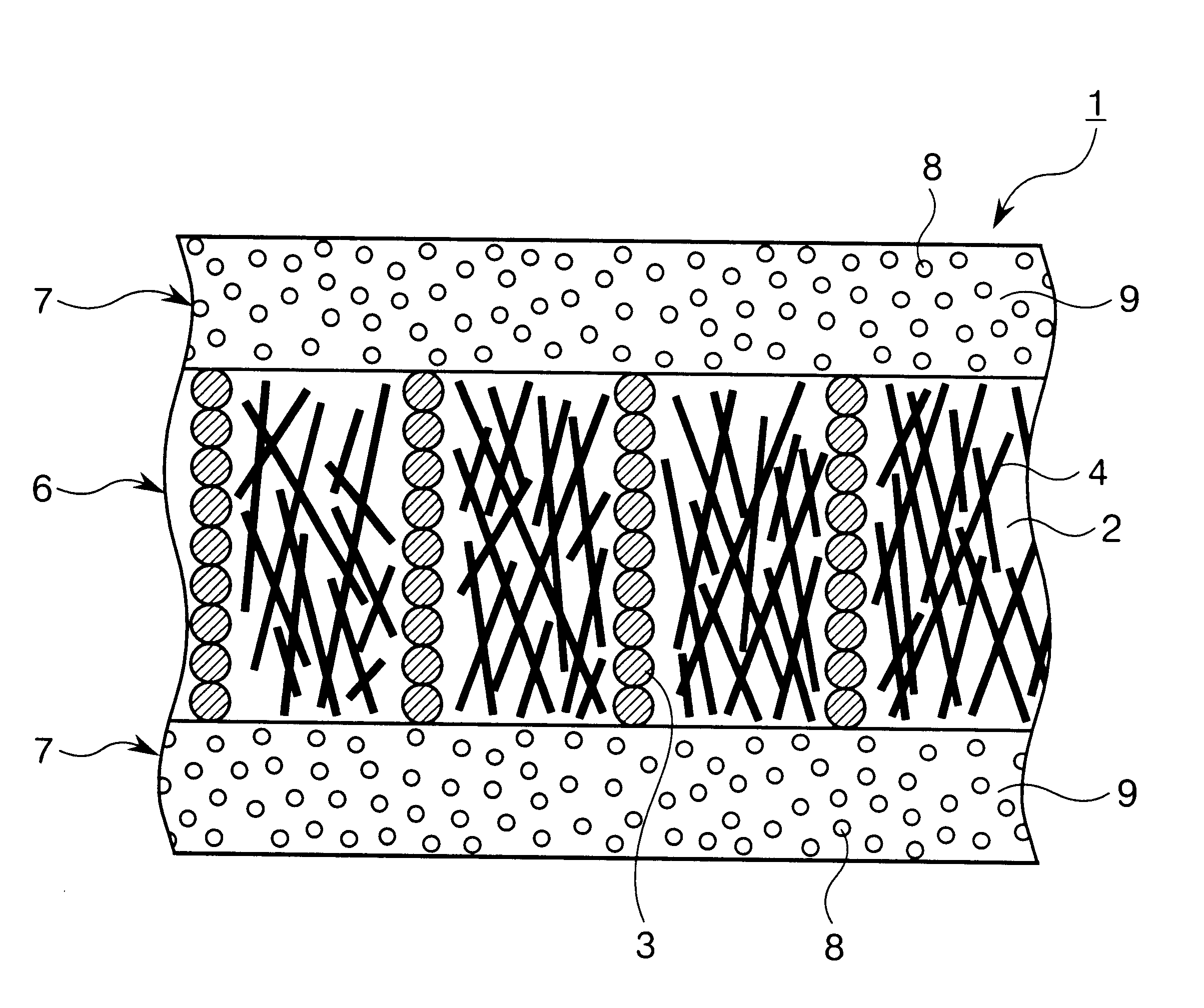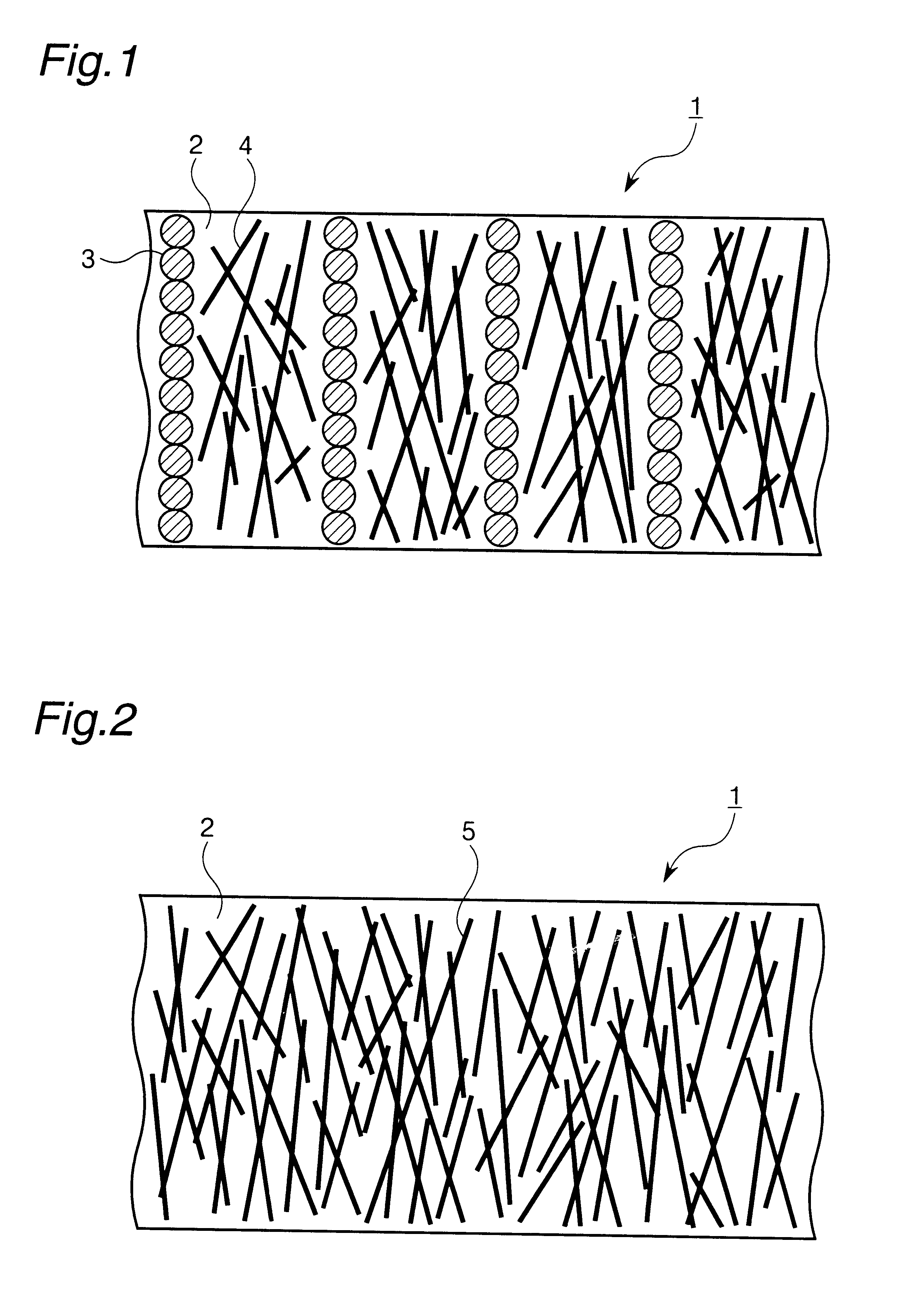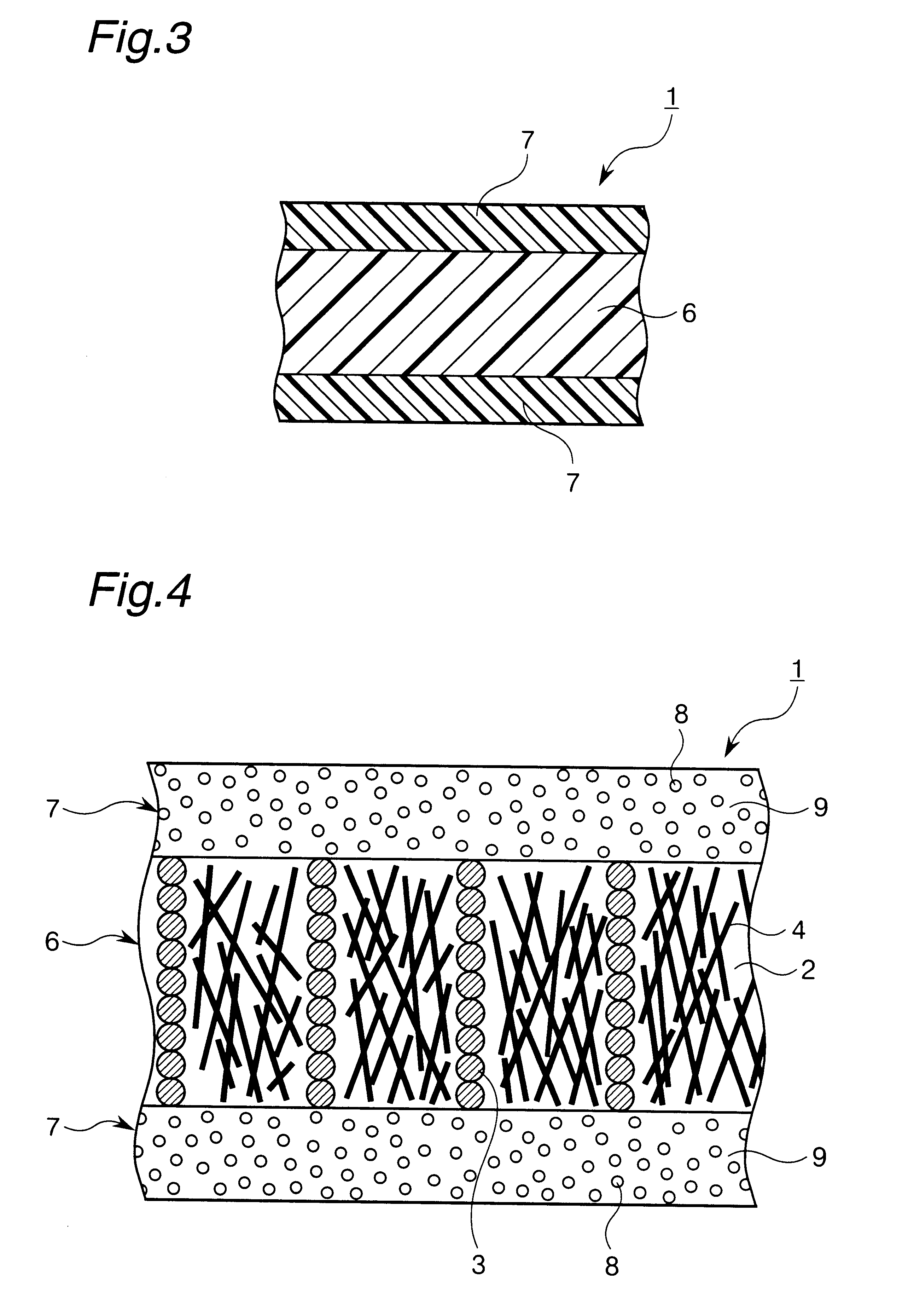Curing composition for forming a heat-conductive sheet, heat-conductive sheet, production thereof and heat sink structure
a technology of curing composition and heat sink, which is applied in the direction of non-metal conductors, conductors, electric/magnetic/electromagnetic heating, etc., can solve the problems of increasing the number of electrodes used in semiconductor elements, increasing the power consumption of semiconductor elements, and deteriorating performance, etc., to achieve excellent heat resistance, high heat conductivity, mechanical strength and adherence to heating elements
- Summary
- Abstract
- Description
- Claims
- Application Information
AI Technical Summary
Benefits of technology
Problems solved by technology
Method used
Image
Examples
example a1
[Production of Heat-conductive Sheet Containing Magnetic Particles]
20% by volume of spherical nickel particles of 40 .mu.m average particle diameter and 20% by volume of carbonized pitch carbon fiber (heat conductivity along fiber axis: 1400 W / m.multidot.K) of 20 .mu.m average diameter and 200 .mu.m average length were added to two-pack addition-type thermocuring liquid silicone rubber (viscosity: 2500 P), and mixed together in vacuum for 30 min. Thus, a curing composition for forming a heat-conductive sheet was obtained.
This composition was cast in a metal mold of magnetic substance (planar metal mold having a 2 mm deep channel) on an electromagnet arranged so as to pass magnetic lines of force through any molding in the direction of the molding thickness, thereby obtaining a molding having the form of a sheet. The molding was satisfactorily deaerated in vacuum, and the metal mold of magnetic substance was overlaid with a cover plate. Magnetic treatment by the electromagnet was per...
example a2
To a 60% by weight butyl acetate cellosolve solution of epoxy resin (EP154, produced by Yuka Shell Epoxy Co., Ltd.), there were added 20% by volume, based on solid contents of the solution, of spherical nickel particles of 40 .mu.m average particle diameter and 20% by volume, based on solid contents of the solution, of carbonized pitch carbon fiber (heat conductivity along fiber axis: 1400 W / m.mu.K) of 20 .mu.m average diameter and 200 .mu.m average length. Further, imidazole curing agent (2P4MHZ, produced by Shikoku Chemicals Corporation) was added in a given proportion, and homogeneously dispersed by means of a three-roll mill. Thus, a curing composition for forming a heat-conductive sheet was obtained.
This composition was cast in a metal mold of magnetic substance (planar metal mold having a 2 mm deep channel) on an electromagnet arranged so as to pass magnetic lines of force through any molding in the direction of the molding thickness. When the composition became claylike due t...
example b1
[Production of Heat-conductive Sheet Containing Carbon Fiber having Magnetic Substance Adhering to Surface Thereof]
30% by volume of carbonized pitch carbon fiber (heat conductivity along fiber axis: 1400 W / m.multidot.K) of 20 .mu.m average diameter and 200 .mu.m average length having its surface covered with a nickel metal of 1 .mu.m average film thickness by electroless plating was added to two-pack addition-type thermocuring liquid silicone rubber (viscosity: 2500 P), and mixed together in vacuum for 30 min. Thus, a curing composition for forming a heat-conductive sheet was obtained.
This composition was cast in a metal mold of magnetic substance (planar metal mold having a 2 mm deep channel) on an electromagnet arranged so as to pass magnetic lines of force through any molding in the direction of the molding thickness, thereby obtaining a molding having the form of a sheet. The molding was satisfactorily deaerated in vacuum, and the metal mold of magnetic substance was overlaid wi...
PUM
| Property | Measurement | Unit |
|---|---|---|
| Angle | aaaaa | aaaaa |
| Thickness | aaaaa | aaaaa |
| Electrical conductor | aaaaa | aaaaa |
Abstract
Description
Claims
Application Information
 Login to View More
Login to View More - R&D
- Intellectual Property
- Life Sciences
- Materials
- Tech Scout
- Unparalleled Data Quality
- Higher Quality Content
- 60% Fewer Hallucinations
Browse by: Latest US Patents, China's latest patents, Technical Efficacy Thesaurus, Application Domain, Technology Topic, Popular Technical Reports.
© 2025 PatSnap. All rights reserved.Legal|Privacy policy|Modern Slavery Act Transparency Statement|Sitemap|About US| Contact US: help@patsnap.com



